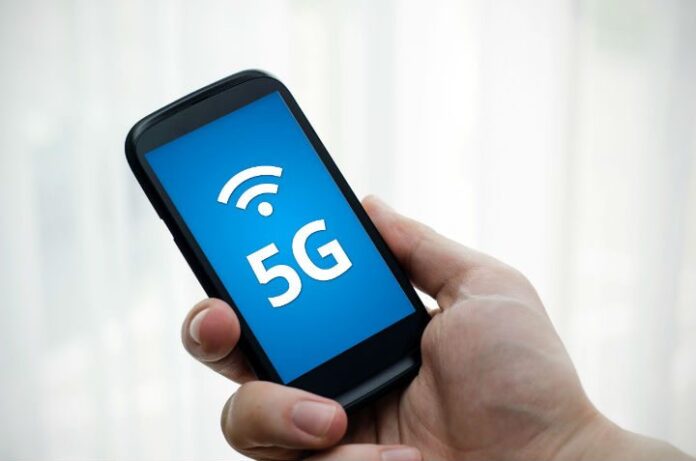FCC 5G spectrum focus only part of high-band airwaves currently being tapped by domestic carriers for next-generation technology testing
The Federal Communications Commission’s move to free up nearly 11 gigahertz of spectrum above the 24 GHz band is being touted as a boost for the development and deployment of so-called “5G” technology, which most in the telecom industry expect will not see an official standard until at least 2019.
The FCC moves, which were part of the “Spectrum Frontiers” proceedings, includes a focus on 3.85 gigahertz of spectrum for licensed use in the 64-71 GHz bands and 7 gigahertz for unlicensed – or “flexible” – use across the 28 GHz, 37 GHz and 39 GHz bands.
Despite expected challenges associated with both freeing up the spectrum and timing on standards, domestic telecom operators have already been moving aggressively to tap high-band spectrum in testing their own moves into the 5G space. However, while some of what is being tapped today for testing is outside those bands mentioned by the FCC order, carriers noted strong support for the efforts.
Verizon Wireless was one of the earliest to throw its hat into the 5G race, announcing last fall plans to begin trialing technology by the end of 2016. The carrier has followed up on those plans by announcing various vendor partnerships tapping spectrum in the 28 GHz band.
Verizon this week also said it had completed a 5G radio specification as part of its 5G Technology Forum group.
“The FCC’s decision … to make thousands of megahertz of high frequency spectrum available will be a critical building block in our country’s 5G future,” noted Craig Silliman, general counsel and EVP for public policy at Verizon in connection with the FCC’s move. “The decision to make this spectrum available for commercial use right now will help ensure that the U.S. maintains its leadership position in wireless communications.”
AT&T earlier this year filed paperwork with the FCC seeking an experimental license to conduct technology trials using spectrum in the 3.4-3.6 GHz, 3.7-4.2 GHz, 14.5-15.35 GHz and 27.5-28.5 GHz bands. In recent tests, the carrier has seen network speeds in excess of 10 gigabits per second.
“A careful review of the order will be necessary to understand the balance struck between the competing interests, but we believe that the FCC’s actions … will provide the clarity needed to move forward with confidence with 5G trials and development, ensuring continued U.S. leadership in wireless innovation and services,” said Joan Marsh, VP of federal regulatory at AT&T.
T-Mobile US earlier this year announced plans with Nokia and Ericsson to trial technology using the 28 GHz band, with Ericsson recently filing a request with the FCC to tap the 14.7-15.5 GHz bands to conduct trials near T-Mobile US’ headquarters in Bellevue, Washington.
Sprint was perhaps a bit late to the 5G party, but has since moved aggressively in terms of testing. The carrier used the recent Copa América Centenario soccer tournament to trial technology in Santa Clara, California, and Philadelphia with partners Nokia and Ericsson using spectrum in the 73 GHz and 15 GHz bands, respectively.
The carrier noted the testing showed download speeds up to 4 Gbps and low millisecond latency.
In a blog post, Sprint CTO John Saw noted the carrier’s history of using spectrum in the 11 GHz, 18 GHz, 23 GHz, 28 GHz and 80 GHz bands for backhaul, claiming the carrier has thousands of sites currently using those bands for wireless backhaul. In terms of advanced technology in support of its 5G plans, Sprint said it expects to use multiple carrier aggregation, coordinated multipoint with beamforming and multiple-input/multiple-output antenna technology to boost coverage and capacity of its 2.5 GHz spectrum.
Rural carriers remain challenged
While the market’s nationwide operators are moving aggressively in tapping high-band spectrum for 5G trials, rural carriers remain on the outside looking in. The Competitive Carriers Association, which represents many of the country’s smaller carriers, applauded the FCC’s efforts, but claimed a number of other measures need to be tackled in order for its members to move forward with 5G.
“Competitive carriers need access to critical spectrum resources, including licensed and unlicensed spectrum, to build out and deploy mobile broadband services in the areas they serve,” said CCA President and CEO Steve Berry in a statement. “As Chairman Wheeler recently noted, these rules have the potential to speed the rollout of next generation wireless networks and re-define network connectivity for consumers in urban and rural areas. While CCA continues to encourage the commission to address meaningful spectrum aggregation limits and to retain LMDS incumbent geographic license areas to better promote competition and prevent stranded investment, the adoption of these new rules is a vital step to ensure carriers of all sizes can compete and provide their consumers with the services they desire. CCA likewise encourages the commission to reform the current Business Data Services regime as carriers begin to utilize this spectrum and densify their networks moving to 5G. I thank the xommission for engaging in a multistakeholder, collaborative approach throughout the rulemaking process, and I look forward to our continued work alongside the FCC to ensure that competitive carriers have meaningful opportunities to participate in the evolution to 5G.”
At the recent CCA Mobile Carriers Show event, mobile operators noted their 5G plans would need to follow those of larger carriers in order to maintain crucial roaming agreements.
“My challenge is that I am a step or two behind those guys, but need to stay inline and serve their needs,” said Ken Borner, VP of engineering and network operations at Atlantic Tele-Network.
The FCC will eventually have final say over what spectrum bands can be used for commercial services, domestic carriers appear to be covering their bases in terms of testing across a number of bands.
Bored? Why not follow me on Twitter

